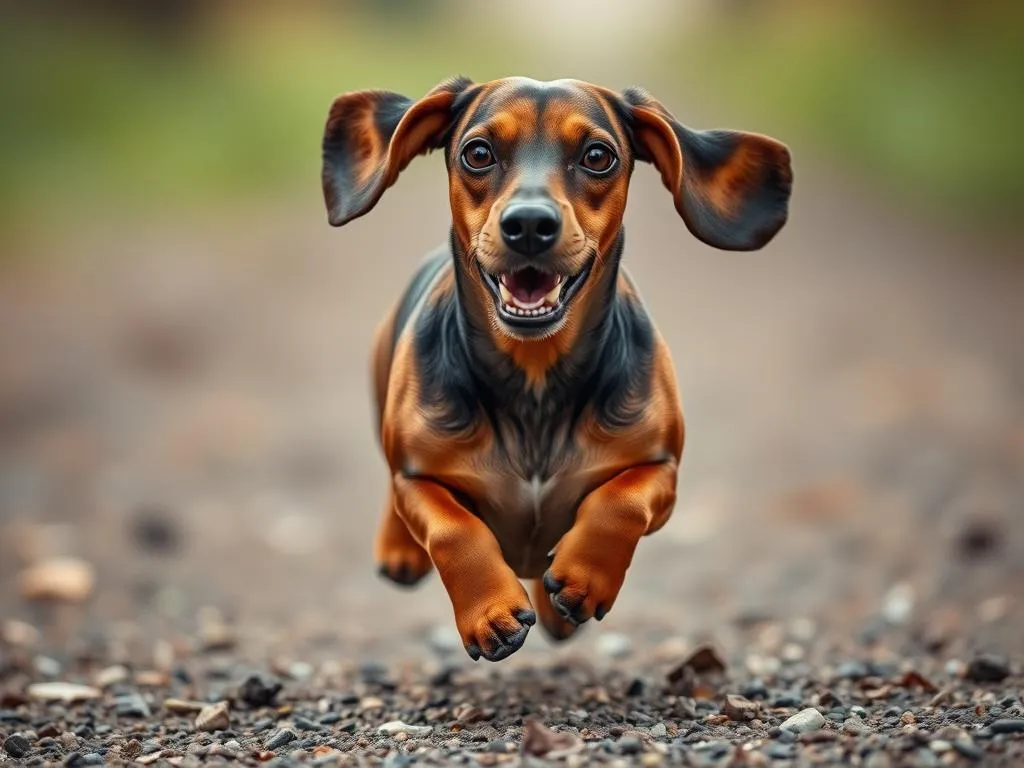
Understanding the various dog breeds can significantly enhance the experience of pet ownership. Each breed comes with its unique characteristics, including temperament, size, and energy levels. Among these breeds, Dachshunds hold a special place in the hearts of many dog lovers. Often affectionately referred to as “wiener dogs,” they are known for their elongated bodies and short legs. A common question that arises among potential owners is, can Dachshunds run fast? This article delves into the fascinating world of Dachshunds, exploring their history, physical traits, and health considerations while addressing their running capabilities.
Understanding Dog Breeds
Definition of Dog Breeds
A dog breed is a specific group of domestic dogs that share common characteristics, such as appearance, behavior, and genetic traits. Breeds are developed through selective breeding, where dogs with desirable traits are chosen to mate, resulting in offspring that exhibit those traits. Over time, these breeds have been categorized based on their purposes, such as herding, hunting, guarding, or companionship.
Importance of Dog Breeds
Understanding dog breeds is crucial for potential owners as it influences various aspects of pet ownership, including behavior, training, health, and care. Each breed has distinct needs and characteristics that can significantly affect the owner’s lifestyle. For instance, some breeds require more exercise and mental stimulation, while others may be more laid-back and adaptable to apartment living.
The Dachshund Breed
History of Dachshunds
Dachshunds originated in Germany in the 16th century and were initially bred for hunting small game, particularly badgers. Their long bodies and short legs allowed them to dig into burrows and chase after prey. The breed has evolved over the years, transitioning from a working dog to a beloved companion. Today, Dachshunds are popular family pets, known for their playful and spirited nature.
Physical Characteristics
Dachshunds come in three coat types: smooth, long-haired, and wire-haired. They typically weigh between 16 to 32 pounds and stand around 8 to 9 inches tall at the shoulder. Their unique features include a long, slender body, a pronounced chest, and a deep, narrow muzzle. Additionally, Dachshunds can come in various colors, including black, brown, chocolate, and even dappled patterns.
Temperament and Behavior
Dachshunds are known for their lively and courageous personality. They are often described as affectionate, loyal, and curious. Their playful nature makes them great companions for families, but they can also display stubbornness, which may pose training challenges. Socialization is essential for Dachshunds, especially when introducing them to children and other pets.
Can Dachshunds Run Fast?
Speed Comparison with Other Breeds
When considering if Dachshunds can run fast, it’s essential to note that they are not built for speed like Greyhounds or other racing breeds. On average, a Dachshund can run at speeds of about 15 to 20 miles per hour. This speed is relatively moderate, especially when compared to smaller breeds like Chihuahuas or larger breeds like Labradors, which can run faster due to their physical structure.
Factors Influencing Running Ability
Several factors contribute to a Dachshund’s running ability:
- Physical Structure: Their short legs and long bodies can hinder their speed. The unique shape designed for burrowing is not optimized for sprinting.
- Age: Younger Dachshunds may have more energy and can run faster than older dogs, who may have reduced agility.
- Health and Fitness Level: A Dachshund’s overall health, weight, and fitness level can significantly influence how fast they can run. Regular exercise is vital for maintaining a healthy weight and muscle tone.
Training for Speed
While Dachshunds may not be the fastest breed, there are ways to improve their running capabilities. Here are some tips:
- Regular Exercise: Regular walks and play sessions help keep Dachshunds fit and enhance their endurance.
- Agility Training: Engaging in agility exercises can improve their speed and coordination. Set up small obstacle courses for them to navigate.
- Fetch Games: Playing fetch can encourage them to sprint and helps burn off excess energy.
Health Considerations for Dachshunds
Common Health Issues
Dachshunds are prone to certain health issues, particularly due to their unique body structure. Some common health concerns include:
- Intervertebral Disc Disease (IVDD): This condition affects the spine and can cause pain and mobility issues. Due to their long backs, Dachshunds are particularly susceptible.
- Obesity: Their love for food can lead to weight gain, which exacerbates health issues and affects their mobility.
- Dental Problems: Regular dental care is essential, as Dachshunds can be prone to dental issues.
Regular vet check-ups and preventive care are crucial in managing these health risks.
Maintaining a Healthy Lifestyle
To ensure a long and healthy life for a Dachshund, proper nutrition and exercise are vital. Here are some recommendations:
- Nutrition: Opt for high-quality dog food that meets their nutritional needs. Consult with a vet to determine the best diet based on age, weight, and activity level.
- Exercise Routine: Aim for at least 30 minutes of exercise daily. This can include walks, playtime, and interactive games that stimulate their minds.
Pros and Cons of Owning a Dachshund
Advantages
Owning a Dachshund comes with several benefits:
- Loyal Companionship: Dachshunds are known for their strong bond with their owners. They are affectionate and often form close relationships with their families.
- Adaptability: They can adapt well to various living environments, including apartments and houses with small yards.
- Unique Personality: Their quirky and playful nature can bring joy and laughter to any household.
Disadvantages
However, there are also challenges associated with owning a Dachshund:
- Health Risks: Their predisposition to certain health issues requires attentive care and may lead to higher veterinary bills.
- Training Challenges: Their stubbornness may necessitate consistent training efforts and patience.
- Separation Anxiety: Dachshunds can develop separation anxiety, making them sensitive to being left alone for long periods.
Conclusion
In summary, understanding the traits and characteristics of Dachshunds is vital for potential pet owners. While they may not be the fastest runners, their unique history, physical attributes, and affectionate nature make them a beloved breed. Adopting a Dachshund requires consideration of their health, exercise, and training needs. Ultimately, they can make wonderful companions for those who appreciate their spirited personality and are prepared for the responsibilities that come with dog ownership.
FAQs
How fast can a Dachshund run compared to other breeds?
Dachshunds can run at speeds of around 15 to 20 miles per hour, which is moderate compared to many other breeds.
What is the best exercise routine for a Dachshund?
A balanced exercise routine should include at least 30 minutes of daily walks, playtime, and mental stimulation through games and training.
Are Dachshunds good with children?
Yes, Dachshunds can be great with children, but early socialization and training are important to ensure they are comfortable and well-behaved.
How often should a Dachshund be groomed?
Grooming frequency will depend on the coat type. Smooth Dachshunds require less grooming, while long-haired and wire-haired varieties may need more regular brushing.
What are the best training methods for Dachshunds?
Positive reinforcement techniques, such as treats and praise, work best for training Dachshunds, as they can be stubborn and unresponsive to harsh training methods.









